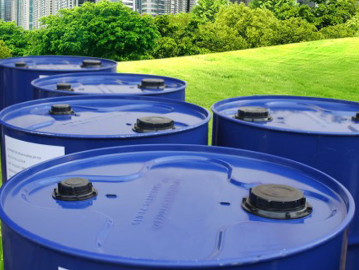
Title: Enhancing Performance with Amine Curing Agents - Potential Breakthroughs Ahead?
Introduction:
Amine curing agents play a significant role in various industries, particularly in the field of polymer science. They are widely used as crosslinking agents to enhance the performance properties of polymers. The utilization of amine curing agents has become a key factor in developing high-performance materials with unique mechanical, thermal, and chemical properties. In recent years, researchers have been investigating potential breakthroughs in the field of amine curing agents to further enhance the performance of materials. This article aims to explore the potential advancements, challenges, and future prospects of amine curing agents in enhancing material performance.
Advancements in Amine Curing Agents:
1. Mechanism Understanding: Significant progress has been made in understanding the mechanism of amine curing agents. Researchers have been able to gain insights into the reaction kinetics and molecular-level interactions during curing processes. This understanding will enable more precise control over the curing reactions, resulting in improved material properties.
2. Novel Amine Structures: The development of novel amine structures has shown promise in enhancing material performance. Functionalized amines, such as polyamine adducts or amine-terminated hyperbranched polymers, can offer tailored reactivity, improved crosslink density, and enhanced mechanical properties. These advancements allow for the creation of materials with exceptional strength, stiffness, and durability.
3. Curing Agent Combinations: Researchers are exploring the synergistic effects of combining different amine curing agents. By carefully selecting and balancing the properties of individual amines, it is possible to optimize the curing process and achieve superior material performance. This approach has shown promise in improving thermal stability, flame retardancy, and chemical resistance.
Challenges and Future Prospects:
While there are significant advancements in the field of amine curing agents, several challenges still need to be addressed:
1. Scalability: The translation of laboratory-scale successes to industrial-scale production remains a challenge. The synthesis and formulation of new amine structures require scalability and cost-effectiveness to be viable for large-scale applications.
2. Reaction Control: The curing reactions involving amine curing agents are time and temperature-dependent. Achieving precise control over these reactions in large-scale production processes can be complex. Developing efficient curing protocols and monitoring techniques is crucial for the industrial adoption of advanced amine curing agents.
3. Environmental Impact: Many conventional amine curing agents are derived from petrochemicals and can have detrimental effects on the environment. The development of environmentally friendly and sustainable alternatives is necessary to reduce the ecological footprint of amine curing processes.
The future prospects for amine curing agents are promising:
1. Customized Performance: The ability to tailor amine structures and curing protocols can revolutionize material performance. Tailored amine curing agents will enable the development of materials with specific properties for various applications, including aerospace, automotive, coatings, adhesives, and electronic devices.
2. Multifunctional Materials: Advanced amine curing agents can enable the incorporation of multiple functionalities into materials. By combining different functional groups, such as self-healing, conductivity, or antibacterial properties, multifunctional materials with diverse applications can be developed.
3. Sustainable Solutions: Research efforts are being directed towards developing renewable and bio-based amine curing agents to reduce dependence on fossil fuels. The trend towards sustainable manufacturing practices will fuel the demand for eco-friendly amine curing agents in the future.
Conclusion:
Amine curing agents have the potential to revolutionize material performance by enhancing mechanical, thermal, and chemical properties. Recent advancements in understanding the mechanisms, novel amine structures, and synergistic combinations enable the development of high-performance materials. Despite challenges such as scalability, reaction control, and environmental impact, the future prospects for amine curing agents are promising. Customized performance, multifunctionality, and sustainable solutions are likely to drive the future development of amine curing agents, paving the way for breakthroughs in various industries.